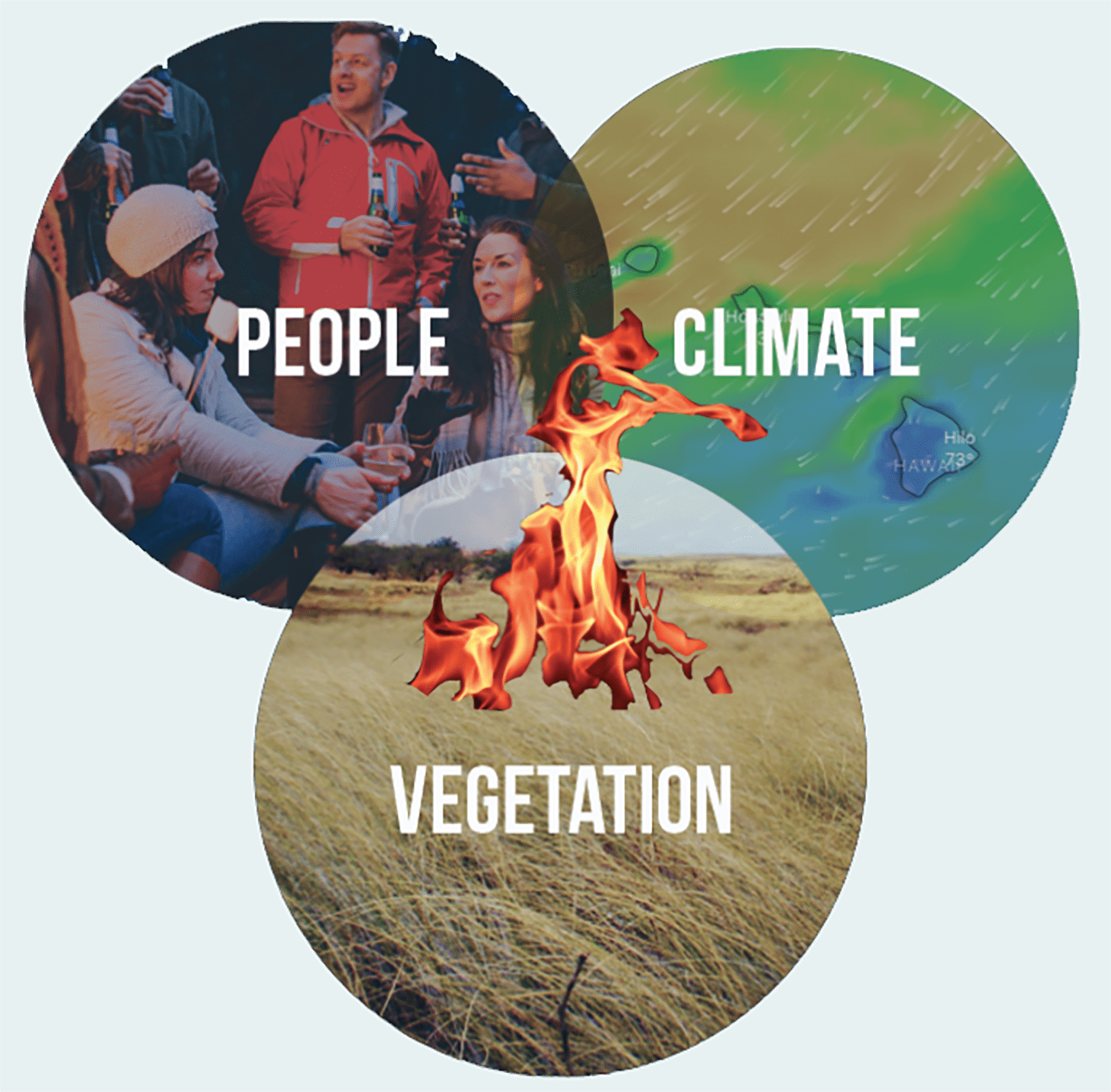The Impacts of Wildfire on US-affiliated Pacific Islands
Wildfire in Pre-Contact Times
Fire on Pacific Islands was relatively rare prior to human arrival. Wildfire was limited to active volcanic events and rare dry lightning strikes. People first arrived to the islands between 1,000-4,000 years ago and, as everywhere else in world, brought fire as a land management tool.
By the time of European contact, fire-prone vegetation (native grasslands and savannas) was present across most high islands in the region. Swift changes in culture and economics and the replacement of native ecosystems by introduced weedy plants (especially fire-prone grasses) and non-native animals have dramatically changed the environment and fire.
Wildfire Today
Wildland fire now occurs frequently and extensively across the region, especially in Hawai‘i, Yap, Palau, Guam, and the Northern Marianas. This is mostly from human caused ignitions, land use legacies and change, and pronounced dry seasons and strong rain shadow effects. Regional drivers of fire occurrence include:
- Abundant human-caused ignitions, both intentional and accidental
- Large extents of fire-prone savannas and grasslands account for 15-25% of total land cover on many high islands.
- Frequent fire weather due to pronounced dry seasons, strong rain shadow effects, and/or episodic drought
Warming air and changing rainfall patterns from climate change will increase our wildfire risk. As the climate crisis intensifies, wildfires will become ever more frequent, more intense, and more wide-spread. More frequent and intense fires will harm resources and infrastructure on land and sea that Pacific island communities value for recreation, traditions, sustenance, and our multi-cultural identities and livelihoods.


